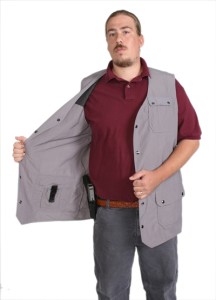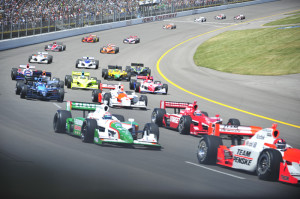I wrote this about a year and a half ago, but since there are a lot more new readers of this blog, I wanted to bring it back because I think it is an extremely important topic.
There was a recent forum discussion that brought this to mind. During the discussion, a proponent of a particular technique made the huge mistake of making an appeal to authority argument, and said that his authority figure stated that this technique was good because “it worked as often as not” (that is pretty much a direct quote, and in context). Now, I don’t think he really thought about what he was writing, because even if that statement was true, it still only meant the technique worked 50% of the time, at best (the quantifiable translation of “as often as not”). That is not what I would consider a good percentage. Especially when there are demonstrably better techniques out there, that are as easily learned as what he espoused.
And even more so, his arguments showed that still too many people make the foolish argument of just because a move works somewhere and sometime, that puts it on equal footing with a technique that works most of the time in almost all situations for almost all people. Those are two completely separate things. So I re-post this older article with apologies to those who have read it before and are lookign for totally new content. I will get something new up in the next day or, but I feel this is important.
Older article:
In the medical field, there is a concept known as the placebo effect. Essentially, if a doctor prescribes a treatment such as a drug for an illness and the drug is not actually a real medicine (but rather something like a sugar pill) but the treatment acts as a cure or as relief anyway, that cure or relief has to be attributed to something other than the actual treatment. It can be chalked up to the person’s own mind accomplishing the goal, or it was a freak act. This phenomenon is well known and accepted. It does occur, more frequently than you might think. So why don’t doctors attempt to ever use this a normal course of treatment? Because there is never anyway to judge if it is actually working, and how often, and to what extent! Sure, the placebo effect can work on occasion, but more often, it utterly fails. So therefore it can never be taken seriously as a factor when trying to cure a patient. If you can’t plan on when it works, or to what level, it is useless as a treatment.
So how does this relate to self-defense? Bear with me for a moment and I will tie it in. This past week, I was participating in an online discussion forum (yes, I know how problematic that can be at times, but sometimes, you can get good information from doing so) related to self-defense and firearms/shooting, and there was a thread in which one of the posters made one of the classic blunders in the SD field. Now this particular poster has a huge chip on his shoulder and has a tendency to bolster his debates by referring to his own experience (he has some field work in this area). However, he continually will try to end the debate over a particular technique/tactic/method by saying “x worked for me”. Now, to him, this is his trump card, his “gotcha” moment. In truth, it is the fighting world’s equivalent of the placebo effect. What he fails to realize that IT DOES NOT MATTER IF IT WORKED IN THE STREET.
What the heck did I just say? Have I taken leave of my senses? Have I stepped into the realm of mystical approaches to combat? Am I suddenly going to start wearing a ponytail and wearing giant muumuus and talking about all the chi in my belly? Not at all. What I am saying is this: if the entirety of your justification of whether a technique is good or not happens to be if it worked, you are missing the larger point.
Just pointing out that something worked is not good enough. Let’s examine this for a moment. A couple of years ago, there was an MMA fight where one of the participants ran up the side of the cage to where he was almost horizontal, jumped off of it, turned in mid-air and threw a kick that not only landed, but almost knocked the other fighter out. Does anyone out there think that would be a good technique to add to their toolbox? It worked didn’t it? So why don’t we all start practicing that move?
There are also documented instances where a person has been shot in the face with a firearm and the bullet did not penetrate the skull, but rather skipped along the bone and came out the skin on the back side of the head. Absolute documented fact. Anyone want to base their gun defense on that? Why not? It “worked”, didn’t it?
I have a video clip I got off of YouTube. It is from Eastern Europe or Russia and shows a person robbing a store at knifepoint. The clerk did a crescent kick and knocked the knife out of the bad guy’s hand. So how many people are going to practice and advocate that move as a good knife defense move? Anyone?…… Bueller?…… Bueller? Again, why not? I have video proof a crescent kick can knock a knife from a hand. So let’s all jump in and start working on being Chuck Norris.
Hopefully, the gist of my point is starting to come across. Using what works as justification is as irrelevant to optimal training as the placebo effect is to medical treatment.
For anyone who has studied fighting for any length of time, one conclusion can quickly be drawn – sometimes the goofiest stuff will actually work. Combat is so chaotic that almost anything can happen at any given time. However, just because anything can happen, does not mean it will happen at a given moment, and therefore “anything” cannot be relied on, just as a doctor cannot rely on the placebo effect to cure his patient.
What we need to focus on is what are the things that work in the most situations, against the widest variety of opponents, and that can be trained with the least outlay of training time, and with the highest chance of predicting the effect of the move on the other person. In other words, what are the most efficient methods/techniques/systems that still have a high amount of efficacy, especially if we are speaking of the everyday person and his limited time to train.
A few years ago, I was involved in another online debate in which the other person was trying to say that the superman punch was a valid SD move because it worked in MMA. So I went and took a look at the prior two years of EVERY UFC match and looked at every instance of the superman punch. What I found was that, yes, the punch worked in MMA – 30% of the time! The other 70% it failed! And that was when executed by professional fighters whose job it was to do nothing but train, and even then, with all of that on their side, they could only land it a third of the time. Is that really a good use of training time if we only have a very limited time to train, or should we focus on techniques that we can make use of a lot more often? Certainly the move “works”, but does that even matter?
So, did the technique work because it was a good technique? Or did it work because the other guy did something really stupid? Or was it blind luck? Or was it because you are a 300 pound powerlifter and you are fighting a 140 pound tweaking methhead? I have a terrific escape when someone has the knee on belly position on you. It is a high percentage move IF you are bigger and stronger than the person on top. If not, and he is bigger and stronger, there is no way the escape works. Should that be a technique that everyone should practice as part of their fundamentals? No? Why not? It “works” – albeit under a narrow contextual range.
In summary, we most certainly need to take into account if a technique works in the real world. But, far more importantly, we need to look at a number of other factors as well before we judge said move as something that should be put into the personal arsenal.


